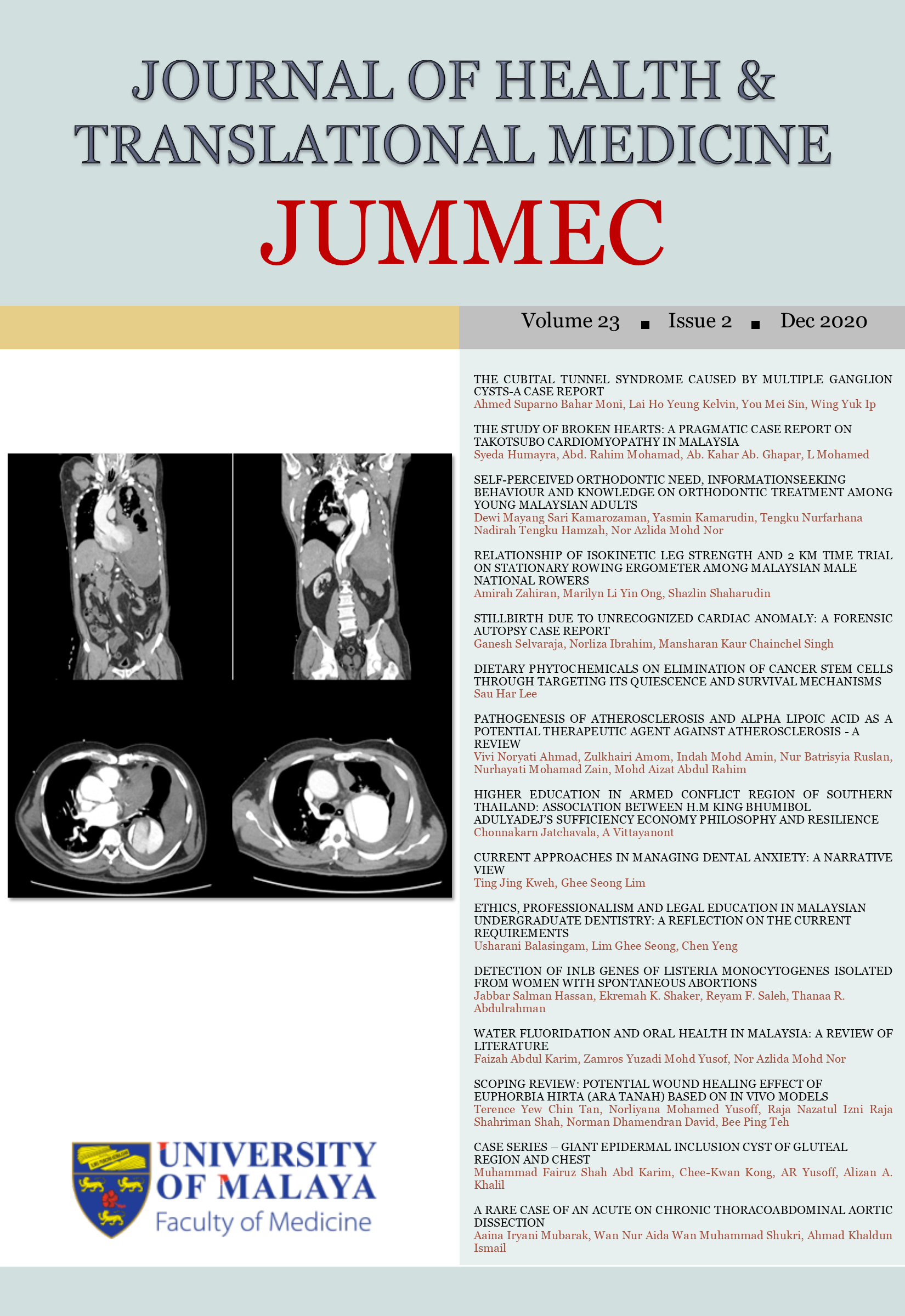SCOPING REVIEW: POTENTIAL WOUND HEALING EFFECT OF EUPHORBIA HIRTA (ARA TANAH) BASED ON IN VIVO MODELS
Received 2020-02-21; Accepted 2020-10-1; Published 2020-12-21
DOI:
https://doi.org/10.22452/jummec.vol23no2.13Keywords:
Euphorbia hirta, Extract, Wounds, Wound Healing, In VivoAbstract
Wound management is important as it helps to promote healing without microbial infection. Euphorbia hirta, a species of Euphorbiaceae family, also known as Ara tanah among Malaysians, is traditionally used to promote wound healing where its poultice is applied to the sores on the legs, bruises and wounds. Several reported pharmacological properties including antioxidant, antimicrobial, antidiabetic, anti-anaphylactic activities have been reported on this plant. The aim of this review was to evaluate the wound healing effects of E. hirta. Information involving only in vivo studies on wound healing effect of E. hirta was searched using electronic databases. The electronic databases include PubMed, Google Scholar, Ovid, CENTRAL, LILACS, and ClinicalTrials.gov from year 1962 to 2020. A total of five out of 70 studies were included and assessment was made. All included articles studied different wound models in rats. All showed significant wound healing activity with different mechanism of action for incision, excision and dead space wound. Quality assessment of the included studies suggested that experimental animal study design can be improved. It can be concluded that E. hirta displayed potential as a wound healing agent in vivo studies although further research on structureactivity relationship of compounds responsible for the wound healing effect and toxicological studies before it can proceed to clinical studies.
Downloads
Downloads
Published
Issue
Section
License
All authors agree that the article, if editorially accepted for publication, shall be licensed under the Creative Commons Attribution License 4.0 to allow others to freely access, copy and use research provided the author is correctly attributed, unless otherwise stated. All articles are available online without charge or other barriers to access. However, anyone wishing to reproduce large quantities of an article (250+) should inform the publisher. Any opinion expressed in the articles are those of the authors and do not reflect that of the University of Malaya, 50603 Kuala Lumpur, Malaysia.


